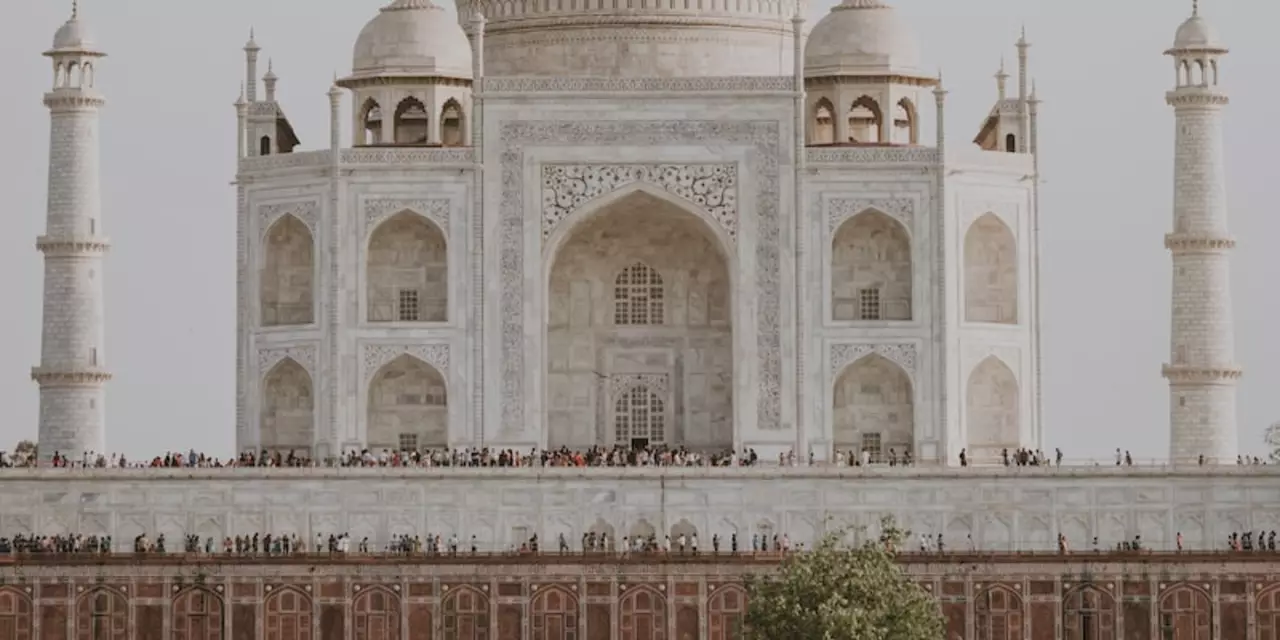27 Jan 2023

Exploring the Factors Behind India's Rapid Population Growth
India is one of the world’s most populous countries, with a population of over 1.3 billion people. But when did this rapid population growth start?There are a number of factors that have contributed to India’s population growth over the past century. One of the most significant is the decline in death rates due to advances in medicine, public health, and nutrition over the last century. This has resulted in a longer life expectancy and a larger population.
Another factor is the decrease in fertility rates, which is the rate at which couples decide to have children. This is due to a number of factors, including increased education, access to contraception, and the changing roles of women in society.
The combination of these two factors has resulted in a rapid population growth in India over the past century. India’s population has more than doubled since 1950, and is projected to reach 1.7 billion by 2050.
India is also a young country, with almost half of its population under the age of 25. This means that the population growth rate is likely to remain high for the foreseeable future.
It is important to note, however, that India’s population growth rate is slowing down, and is projected to reach its peak by 2060. This will be due to a combination of factors, including an aging population, increased access to contraception, and the changing roles of women in society.
In conclusion, India’s rapid population growth has been driven by a combination of factors, including a decline in death rates, decreased fertility rates, and a young population. This growth rate is projected to peak in 2060, after which the population will begin to stabilize.
Examining the Impact of India's Rapid Population Growth
India is one of the world’s most populous countries, with a population of more than 1.3 billion people. This population has grown rapidly over the past few decades, and this growth has had a significant impact on the country’s economic development, infrastructure, and social dynamics. In this blog post, we’ll take a closer look at the causes and effects of India’s rapid population growth.The primary cause of India’s population growth is improved healthcare. In the 1950s and 1960s, India had one of the highest infant mortality rates in the world. But with improved access to healthcare, better nutrition, and increased life expectancy, India’s infant mortality rate has dropped significantly. This has resulted in a much higher birth rate and a consequent population growth.
The second cause of India’s population growth is migration. Over the past few decades, India has seen a large influx of people from neighboring countries, as well as internal migration from rural areas to urban centers. This has resulted in an increase in the population of cities like Mumbai, Delhi, and Bangalore.
The effects of India’s rapid population growth have been both positive and negative. On the positive side, the growing population has resulted in more people entering the workforce, which has helped to boost economic growth. This has led to increased investment in infrastructure, education, and healthcare.
At the same time, the population growth has put a strain on infrastructure, resources, and the environment. India’s cities have become crowded and polluted, and the country is struggling to meet the needs of its growing population. This has led to a rise in inequality and poverty, as well as issues like overcrowding and water scarcity.
In conclusion, India’s population has grown rapidly over the past few decades, and this growth has had a significant impact on the country’s economic and social dynamics. With improved healthcare and migration, India’s population has grown, but this growth has come with both positive and negative effects. It is clear that India needs to find solutions to address the issues caused by its population growth if the country is to continue to develop and prosper.
The History of India's Rapid Population Growth
India's population has grown rapidly over the last several decades. The country's population was estimated to be around 1.3 billion in 2020, making it the second most populous nation in the world after China. India is projected to become the most populous country in the world by 2027.The rapid growth of India's population can be traced back to the early 20th century, when the country was under British rule. During that period, India's population increased from around 170 million in 1901 to almost 400 million in 1947. This was due to a combination of factors, including improved healthcare and nutrition, as well as a decrease in infant mortality.
The period after India's independence in 1947 also saw a significant increase in the country's population. This was largely due to the government's push for family planning and the establishment of the National Family Planning Programme. This programme was aimed at reducing fertility rates and controlling the population.
The 1960s and 1970s were characterized by rapid population growth, with the population increasing from around 430 million in 1961 to almost 800 million in 1981. This rapid population growth was due to a combination of factors, including improved healthcare, increased life expectancy, and a decrease in death rates.
The population growth slowed down in the 1980s and 1990s, due to the introduction of the two-child policy and other measures to reduce fertility rates. Despite this, India's population continues to grow at a rapid rate, with the country's population expected to reach 1.5 billion by 2030.
Understanding India's Rapid Population Growth and Its Implications
India is one of the most populous countries in the world, and its population has been growing at an astonishing rate for the past few decades. It is estimated that India’s population grew from 548 million in 1951 to 1.2 billion in 2011. This unprecedented growth has had a profound effect on India’s social, economic, and political landscape.To understand why India’s population has been growing so quickly, one must first understand the demographic transition model. This model explains how populations transition from high birth and death rates to low birth and death rates. In India, the transition was largely driven by advances in healthcare, leading to a sharp decline in infant mortality. This, combined with a cultural preference for large families, has led to a rapid increase in India’s population.
The implications of this population growth are far-reaching. India’s economy has been struggling to keep up with the growing population, leading to high levels of unemployment and poverty. The government has also had to cope with a shortage of resources, leading to an increased reliance on imported goods. Additionally, the population growth has put a strain on the environment, leading to a decrease in the availability of clean water and an increase in air and water pollution.
India’s population growth is a complex issue that requires a multifaceted approach to address. The government has implemented a number of initiatives to reduce population growth, such as improving access to contraception and providing financial incentives to families with fewer children. There is also a need to focus on economic development and job creation in order to provide more economic opportunities and reduce poverty. Finally, more needs to be done to protect the environment and ensure the availability of clean water and air.
India’s rapid population growth has had a profound effect on the country, and understanding the causes and effects of this growth is essential to finding solutions. With the right policies in place, India can address the challenge of population growth and create a brighter future for its citizens.
